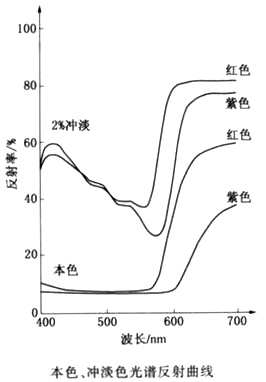5,12-dihydroquinolino[2,3-b]acridine-7,14-dione
5,12-dihydroquino[2,3-b]acridine-7,14-dione
CAS: 1047-16-1;39362-27-1;42612-56-6;63440-25-5;65381-35-3;67051-64-3;67053-84-3;790240-46-9;87397-48-6
Molecular Formula: C20H12N2O2
5,12-dihydroquinolino[2,3-b]acridine-7,14-dione - Names and Identifiers
5,12-dihydroquinolino[2,3-b]acridine-7,14-dione - Physico-chemical Properties
| Molecular Formula | C20H12N2O2 |
| Molar Mass | 312.32 |
| Density | 1.5 g/cm3 |
| Melting Point | 390 °C |
| Boling Point | 568.5±50.0 °C(Predicted) |
| Flash Point | 221.3°C |
| Vapor Presure | 6.14E-13mmHg at 25°C |
| Appearance | Purple red powder |
| Color | Orange to Amber to Dark red |
| pKa | -2.96±0.20(Predicted) |
| Storage Condition | Sealed in dry,Room Temperature |
| Refractive Index | 1.702 |
| MDL | MFCD00059956 |
| Physical and Chemical Properties | Hue or color: purple, yellow, red relative density: 1.5-1.8 Bulk density/(lb/gal):12.6-14.8 melting point/℃:310->400 average particle size/μm:0.05-0.1 particle shape: Purple/Cube specific surface area/(m2/g):22-85 pH value/(10% slurry):6.5-9 oil absorption/(g/100g):40-70 hiding power: transparent diffraction curve:  reflectance curve:  brilliant purple powder. Bright colors. Density 1.51g/cm3. Insoluble in water, ethanol, heat stability of 165 ℃. This product is red powder, density 1.48g/cm3, bright color. Excellent fastness properties, resistance to organic solvents and high heat resistance, mixed with tetrafluoroethylene, after 430 deg C high temperature extrusion does not change color, and in a variety of plastics do not migrate. The heat resistance and the weather resistance are excellent, and the fastness thereof is not reduced even if it is highly diluted. |
| Use | There are 128 kinds of commercial dosage forms of the pigment. Beta-type quinacridone gives a reddish violet, with tetrachlorosulfur isatin (P.R.88) color light is similar, excellent light resistance and heat resistance stability; Used in high-grade industrial coatings, and inorganic pigments such as iron oxide red, molybdenum red and other color matching, transparent type can be used for metal decorative paint; can also be used in plastics such as PVC and PUR coloring, in polyolefin can withstand 300 °c. The light fastness of γ-type is slightly lower than that of β-type, but it has higher transparency. The γ-type of coarse particle size has excellent light resistance and is suitable for outdoor paint coloring, with P.R.122 puts out a tone close to the standard magenta, and the printed sample is light-resistant to grade 6-7 and heat-resistant to 190 ℃/10min, which is used for coloring laminated plastic films and PP puree. |
5,12-dihydroquinolino[2,3-b]acridine-7,14-dione - Risk and Safety
| Safety Description | 24/25 - Avoid contact with skin and eyes. |
| RTECS | VA8533500 |
| HS Code | 29339900 |
| Toxicity | LD50 oral in rat: > 20mL/kg |
5,12-dihydroquinolino[2,3-b]acridine-7,14-dione - Reference Information
| color index | 46500 |
| LogP | 2.2 at 24℃ and pH7 |
| NIST chemical information | Information provided by: webbook.nist.gov (external link) |
| EPA chemical information | Information provided by: ofmpub.epa.gov (external link) |
| use | mainly used for coloring plastics, coatings, resins, pigment printing, inks, rubber and plexiglass, etc., and can also be used for coloring synthetic fibers. used for coloring plastic, paint, ink, rubber and synthetic fiber stock solution used for coloring plastic, paint, ink, synthetic rubber mainly used for coloring plastic, paint and ink. |
| production method | the synthesis method is the same as quinacridone red. due to different crystal forms, the oxidation process in the oxidation step is different. the oxidation method of β-quinacridone is as follows. Add 108kg of industrial ethanol, 45kg of water and 48kg of industrial solid alkali, stir, add 10kg of filter cake of 6,13-dihydroquinacridone refined product, stir for 30min, add sodium m-nitrobenzene sulfonate and refluxed for 4h, cool to room temperature, add 250kg of cold water, release naturally, stir for half an hour, press filter, recover solvent, and dry the filter cake at 70 ℃ to obtain 9.5kg. |
| toxic substance data | information provided by: pubchem.ncbi.nlm.nih.gov (external link) |
Last Update:2024-04-09 20:52:54
![5,12-dihydroquinolino[2,3-b]acridine-7,14-dione](http://res.chembk.com/assets/images/structure/300447.gif)
Supplier List
Product Name: 5,12-dihydroquino[2,3-b]acridine-7,14-dione Request for quotation
CAS: 1047-16-1
Tel: 0086-551-65418684
Email: sales@tnjchem.com
info@tnjchem.com
Mobile: 0086 189 4982 3763
QQ: 2881500840
Wechat: 0086 189 4982 3763
WhatsApp: 0086 189 4982 3763
Product List: View Catalog
CAS: 1047-16-1
Tel: 0086-551-65418684
Email: sales@tnjchem.com
info@tnjchem.com
Mobile: 0086 189 4982 3763
QQ: 2881500840
Wechat: 0086 189 4982 3763
WhatsApp: 0086 189 4982 3763
Product List: View Catalog
Spot supply
Product Name: Quinacridone Visit Supplier Webpage Request for quotationCAS: 1047-16-1
Tel: 18301782025
Email: 3008007409@qq.com
Mobile: 18021002903
QQ: 3008007409
Wechat: 18301782025
Product Name: Pigment Violet Powder 19 Request for quotation
CAS: 1047-16-1
Tel:
Email: mdpigment@163.com
Mobile: 13926051736
CAS: 1047-16-1
Tel:
Email: mdpigment@163.com
Mobile: 13926051736
Product Name: 5,12-dihydroquino[2,3-b]acridine-7,14-dione Request for quotation
CAS: 1047-16-1
Tel: 0086-551-65418684
Email: sales@tnjchem.com
info@tnjchem.com
Mobile: 0086 189 4982 3763
QQ: 2881500840
Wechat: 0086 189 4982 3763
WhatsApp: 0086 189 4982 3763
Product List: View Catalog
CAS: 1047-16-1
Tel: 0086-551-65418684
Email: sales@tnjchem.com
info@tnjchem.com
Mobile: 0086 189 4982 3763
QQ: 2881500840
Wechat: 0086 189 4982 3763
WhatsApp: 0086 189 4982 3763
Product List: View Catalog
Spot supply
Product Name: Quinacridone Visit Supplier Webpage Request for quotationCAS: 1047-16-1
Tel: 18301782025
Email: 3008007409@qq.com
Mobile: 18021002903
QQ: 3008007409
Wechat: 18301782025
Product Name: Pigment Violet Powder 19 Request for quotation
CAS: 1047-16-1
Tel:
Email: mdpigment@163.com
Mobile: 13926051736
CAS: 1047-16-1
Tel:
Email: mdpigment@163.com
Mobile: 13926051736
View History

